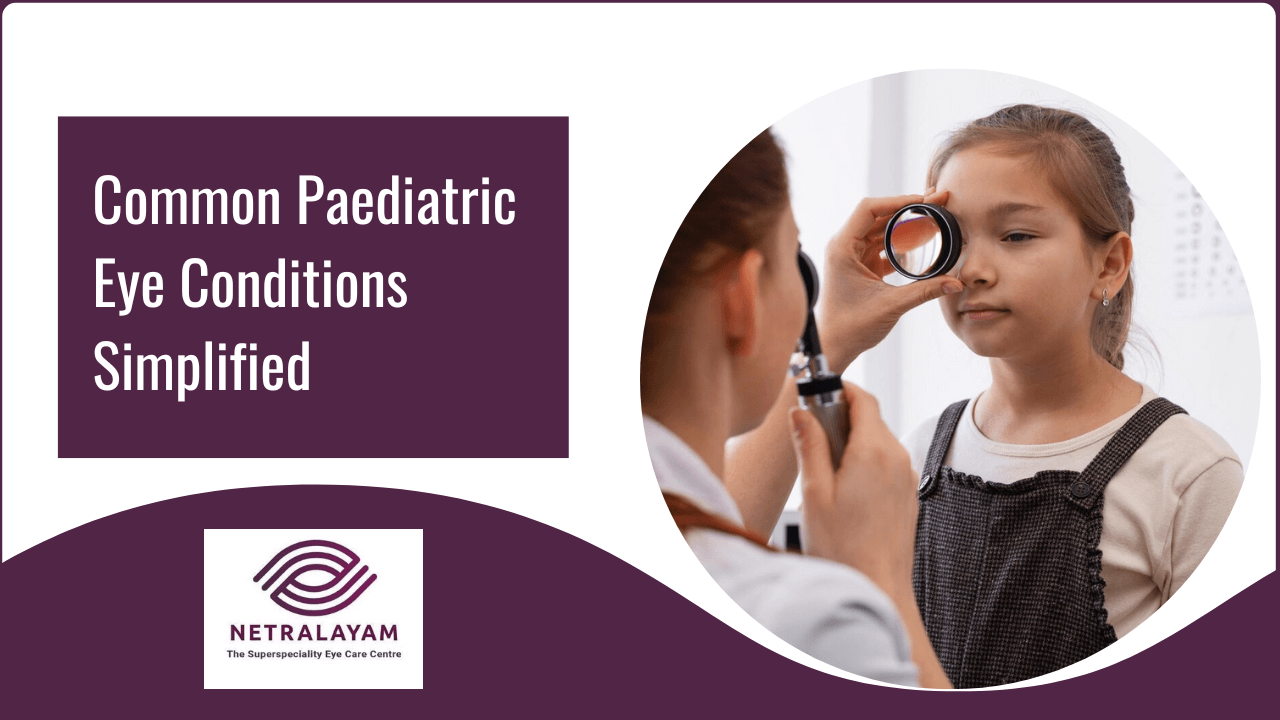Committed to Eye Care with Compassion, Technology and Competency
Committed to Eye Care with Compassion, Technology and Competency

8/13/2024
Holding your hands, your child wants to experience the wonders of the world around them. Those tiny eyes follow you everywhere, hoping to see everything you see. However, common paediatric eye conditions can affect their incredible imagination, stifling their growth and development at an early age. As per a study, there are about 70 million vision-impaired people in India, of which 0.24 million are children.
Early detection and prompt treatment can help manage these conditions, ensuring children's eyes are always filled with curiosity and wonder. Let's learn more about common paediatric eye problems to help them see a brighter future.
As the term suggests, Strabismus, or crossed eyes, occurs when the eyes are misaligned. It can affect children of all ages and, if not addressed properly, can lead to amblyopia (lazy eye).
Six tiny muscles help our eyes work together like a team. They let us focus on the same thing. However, in this condition, one eye might look at one thing while the other looks elsewhere. This can confuse the brain, especially for kids. Their brain might just ignore what one eye sees. Strabismus can be of three types: esotropia (inward turning), exotropia (outward turning), hypertropia (upward turning), and hypotropia (downward turning).
Amblyopia is one of the common paediatric eye conditions where one eye becomes weaker due to disuse. It often occurs in conjunction with strabismus but can also develop independently.
The condition is called ‘lazy eye’, as one eye weakens and the brain relies more and more on the stronger eye. It happens due to a breakdown in the coordination between the two eyes. Amblyopia must be treated promptly to prevent permanent vision loss.
Refractive error is a paediatric eye disease that occurs when the shape of the eye prevents light from focusing properly on the retina. Common refractive errors in children include nearsightedness (myopia), farsightedness (hyperopia), and astigmatism. Let us discuss them one by one:
All About Refractive Errors
Conjunctivitis is an inflammation of the conjunctiva, the clear membrane covering the white part of the eye and inner eyelid. Bacteria, viruses, or allergies can cause it.
It is a common eye infection, particularly prevalent in young children. It's an inflammation of the conjunctiva, the clear tissue covering the eye's white part and the eyelids' inner surface. This inflammation often causes the eye to appear pink or red, hence the nickname "pink eye."
Cataracts are clouding of the eye's lens that can affect vision. While more common in adults, cataracts can also occur in children.
A clear lens is essential for the eye to focus images accurately on the retina. This focused image is then transmitted to the brain for interpretation. A cataract can obstruct light from reaching the retina, hindering this process.
The tear ducts help drain tears from the eye. A blocked tear duct prevents proper drainage, leading to excessive tearing and discomfort.
In children, blocked tear ducts occur when the nasolacrimal duct, responsible for draining tears from the eye into the nose, becomes obstructed. This can be due to a congenital issue where the duct is not fully developed or has a persistent membrane blocking its opening.
Every child deserves to see the world bright and clear. By understanding common eye conditions and scheduling regular check-ups, you're taking proactive steps to ensure healthier eyes for your little one. Remember, early intervention is key to preventing vision problems from becoming bigger hurdles. So, don't blink twice! Give your child the gift of clear sight.
Common paediatric eye conditions require expert treatment and continued care. At Netralayam, we are committed to providing exceptional paediatric eye care. Our specialists are dedicated to diagnosing and correcting various eye conditions in children. We offer comprehensive eye exams, advanced diagnostic technology, and personalised treatment plans to help secure your child's vision. Book an appointment with us to learn more.
Comments are closed
